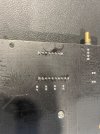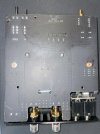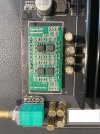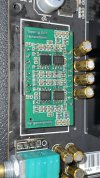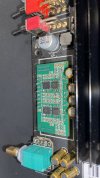No need to cut the pins actually. After removing the inside frame from the chassis just clean away the black coating from around the solder joints ( the black coating just gums up soldering tips badly in my experience). Use solderwick braid to remove most of the solder around each pin (don't overheat any area too long and let any area to mildly cool before continuing; patience is key). I then used a very low temperature melting solder (Chipquik removal alloy; only use a little) and worked it in each pin joint. It stay molten a long period of time so you actually run the soldering gun tip back and forth along the pins and it will eventually come right out. Then just clean up all the soldering pads with the solderwick braid & finally alcohol clean everything. Clear?
Cheers
Cheers


